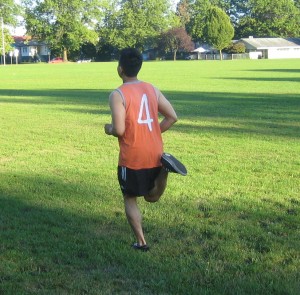Individuals who engage in strenuous exercise under warm climate are prone to heat illnesses such as heat exhaustion, dehydration and heat stroke. Most causes of heat-related illnesses among athletes can be prevented by taking into consideration some basic guidelines for hot weather exercise as well as being familiar with the indications of the conditions. Nevertheless, in case these warning signs are ignored, they might progress into a life-threatening heat emergency.
Common heat-related illnesses
- Heat rash
- Dehydration
- Heat cramps
- Heat exhaustion
- Heat stroke
- Hyponatremia
How to prevent heat-related illnesses
Most forms of heat-related illnesses can be avoided by following basic prevention measures. Nevertheless, it is vital for athletes to know the warning indications of a developing heat-related illness and understand the level of severity of each condition.

Generally, the body temperature is controlled by sweating. There are various factors that can reduce the sweat response of the body which includes engaging in strenuous exercise during warm weather or high humidity, obesity, age, fever, illness, dehydration, alcohol and medications. Once an individual develops a heat-related illness, it typically occurs after several hours of exertion and intense sweating that initially leads to dehydration and progresses to electrolyte imbalances. The following are measures to prevent heat-related illnesses.
- Drink the right amount of fluids. Choosing the right amount of fluid usually depends on individual factors including the intensity and length of the activity.
- Replace lost electrolytes. As sweat leeches salt and minerals from the body, it is vital to preserve the level of sodium and electrolyte if the individual is sweating abundantly and training more than 90 minutes. The easiest way to replace lost electrolytes is through sports drinks.
- Wear the right clothing. The individual should stick with lightweight, light-colored, loose-fitting clothes. Under warm climates, using a hat and sunscreen is also helpful. Choose clothes that are light and capable of wicking out sweat.
- Apply sunscreen to avoid sunburn. Take note that sunburn can reduce the ability of the body to cool itself and can cause fluid loss. Use a sunblock with SPF 15 or higher. In addition, use a hat that provides shade and allows enough ventilation.
- Acclimatize the body to the heat. The individual will have higher tolerance for exercise under the heat if he/she is accustomed to it steadily over 1-2 weeks. In case travelling to an area with a warmer climate, allow several days to adjust before engaging in strenuous exercise. The individual should avoid any strenuous activity or exercise during the hottest time of the day. It is recommended to train close to sunset or sunrise.
- The individual should avoid heavy foods, spicy foods and alcoholic beverages since these can increase the core body temperature. If the individual experiences fatigue, headaches, irritability or diminishing performance during exercise, he/she should stop exercising and cool off.
Always bear in mind that it is easier to prevent any of the heat-related illnesses by taking into consideration these measures.
